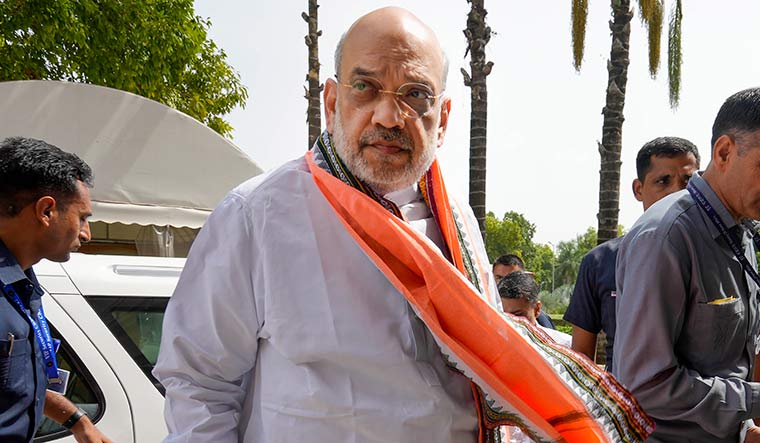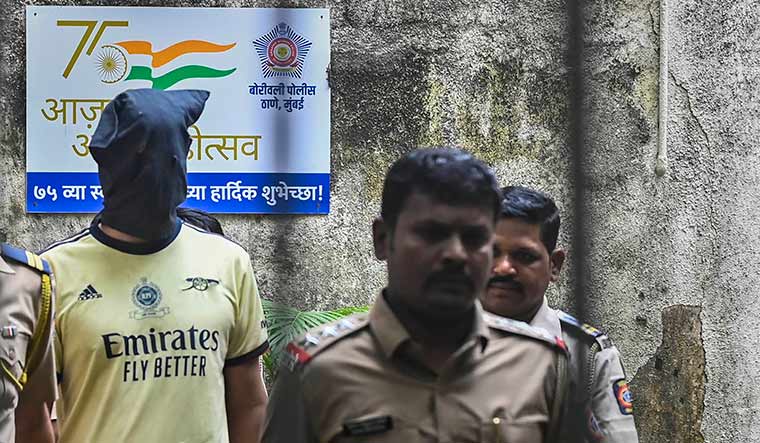On February 20, 1985, Raja Man Singh, the titular head of the Bharatpur province in Rajasthan, was annoyed with his political opponent Shiv Charan Mathur, then Congress chief minister, and rammed his one-tonne military vehicle into Mathur’s chopper sitting on the helipad. His men also destroyed the stage set up for Mathur. Deputy Superintendent of Police Kan Singh shot dead Man Singh, and was sentenced to life imprisonment―35 years later, when he was 82. It took 1,700 hearings for the Indian criminal justice system to pronounce a verdict. Kan Singh died serving jail term the same year.
This case, or thousands of others stuck in courts for decades, point to the need for timely justice. And as the Modi government embarks on an ambitious plan to re-codify the criminal justice framework―it tabled three new bills in Parliament on August 11 to replace the Indian Penal Code 1860, the Code of Criminal Procedure 1973 and the Indian Evidence Act 1872 with the Bharatiya Nyaya Sanhita (BNS), the Bharatiya Nagarik Suraksha Sanhita (BNSS) and the Bharatiya Sakshya Adhiniyam (BSA)―the talk is about keeping the focus on the needs of the citizen.
There is near unanimity among parliamentarians, police, judiciary and civil society that inordinate delays in investigation, overcrowding of prisons, poor use of technology, complex legal procedures and low conviction rates are delaying justice to Indians.
When the CrPC was enacted in 1973 for the administration of criminal law in India, the then Congress government had made a simultaneous attempt to overhaul the IPC. But lawmakers of that era say the consultations could not be completed because of various reasons and other developments caught the government’s immediate attention. The outcome was that the IPC continued, and was read with the CrPC.
Congress leader Manish Tewari said it was unfair to claim that the colonial legacy was continuing in the justice system. “We must not use hyperbole,” he said, arguing that since the Constitution was adopted, Indian courts had interpreted and reinterpreted the laws. “So, it is not just the letter but the application of the law after its interpretation that holds the key to the criminal justice system today,” he said. “When we are changing the landscape of the criminal justice system, it is imperative that the parliamentary committee studying the bills over the next few months invites civil society, lawyers, police officers and human and women’s rights activists to look at the proposed bills clause by clause.”
Those privy to the consultation process said the overhauling of the codes began in 2020. Union Home Minister Amit Shah held review meetings before setting up different committees and asking state governments, courts and the police to examine existing laws and suggest reforms. The Central Bureau of Investigation was one of the lead agencies involved.
A committee headed by Praveen Sinha, former CBI special director and now special secretary in the National Security Council, will undertake the actual work of code writing. Another panel under professor G.S. Bajpai, vice chancellor of National Law University of Delhi, suggested changes keeping in mind present-day challenges.
 Agent of change: Home Minister Amit Shah held review meetings before setting up different committees and asking state governments, courts and the police to examine existing laws and suggest reforms | PTI
Agent of change: Home Minister Amit Shah held review meetings before setting up different committees and asking state governments, courts and the police to examine existing laws and suggest reforms | PTI
“The intent of any law, anywhere in the world, is to meet the existing and emerging challenges as well as the aspirations of society,” said D.K. Pathak, former chief of the Border Security Force. “Codification and modifications in law are a continuous and evolving process and, to this extent, it is a much-needed and much-awaited move by the government. No law is ever made on a clean slate. The same applies to these three laws. Most provisions have been retained, though codified and arranged in a new format.”
Pathak added that it was a progressive move as many years of hard work had gone into the bills. Several Law Commission reports were consulted and committees constituted by the government―like the Bezbaruah Committee, Vishwanathan Committee, Malimath Committee, Madhava Menon Committee―made recommendations from time to time.
National reforms are neither a day’s job nor a single government’s effort, rather a culmination of a churn in society. For instance, the parliamentary standing committee on home affairs had, in 2005, 2006 and 2010, called for rationalising criminal laws and bringing comprehensive legislation instead of piecemeal amendments. “Indians have always been vocal about being the world’s largest democracy,” said Yashovardhan Azad, former Central Information Commissioner who also served as special director in the Intelligence Bureau. “I am not aware of any other country talking in such sharp tones about the demand to overthrow the yoke of imperialism even today. So, as we decide to bring the criminal justice system in line with present-day reality, we must start preparing ourselves for the future. It is the beginning of an overhaul as it puts pressure on the executive, judiciary and legislature to reexamine processes and adopt measures to improve their capacity to deliver better results.”
Some of the proposed changes in the new laws reflect people’s demands, like throwing out sedition and bringing in new sections to control crimes that have become more common, like mob lynching, gang-rape and acts of terror. Terrorism is defined in the Bharatiya Nyaya Sanhita; though it is part of the Unlawful Activities (Prevention) Act, it was not defined under the IPC.
Then there is the provision of trial in absentia, which will give more teeth to India’s fight against cross-border terror syndicates. For example, the latest cases against pro-Khalistan outfits and drug networks become weak in the absence of trials against the fugitives sitting on foreign soil. “Under the proposed law, trials can be conducted against fugitives and if a death sentence or imprisonment is awarded, the host country will be more inclined to hand him over,” said Azad.
Pendency of cases is a major stumbling block in the criminal justice system. At the end of 2022, there were about five crore cases pending across various courts in the country―4.32 crore in district and subordinate courts; nearly 69,000 in the Supreme Court and about 60 lakh in High Courts.
“Fixing timelines for judicial processes like framing of charges, 60 to 90 days for filing a charge-sheet and pronouncing judgments and limitation on adjournments (maximum two) will go a long way in [ensuring] justice,” said Azad.
M.L. Kumawat, former special secretary in the Union home ministry, said the first stage of reforms would mean increasing the number of judges, building infrastructure for video conferences to speed up the disposal system and digitising police stations. There are 17,537 police stations in the country and thousands of vacancies at the constable and other ranks. Some of these stations might have been given the technology but require internet access, training and manpower to register online FIRs and carry out speedy investigations.
The proposal to create forensic units in every district will also mean training the policemen on the ground. Currently, the Bureau of Police Research and Development, the nodal body that helps states upgrade their infrastructure, is able to train only 5 per cent of the total police strength in the country. And even if the numbers are doubled or tripled, it will still not be enough, said Kumawat, who is also the founder of the Sardar Patel University of Police, Security and Criminal Justice in Jodhpur.
Another area of focus is crimes against women and children―there would now be enhanced punishments as gang-rape would entail 20 years or life imprisonment and the rape of a minor could attract the death penalty. The BNS also includes a new section to punish sexual relations with a woman by concealing identity or by falsely promising marriage, promotion or employment.
Pathak, though, said that while these crimes deserve more punishment, the 2012 Delhi gang-rape case has shown that the incidence of such crimes does not necessarily drop with enhanced punishment. The increase in rape cases and crimes against children requires a bigger change in social mindset, over and above the law, he said.
One of the appreciable changes, said experts, has been in dealing with petty offences―with regards to definition, punishment and process of disposal of cases. These cases can now be tried summarily and disposed of, reducing pendency and workload of the lower judiciary. “It will not only reduce the pendency of cases by nearly 40 per cent, but also reduce overcrowding in jails because petty crime offenders account for a sizeable percentage of jail inmates,” said Pathak.
Finally, a lot of the provisions under the new laws would require passionate implementation. Like zero FIRs, a procedural tool allowing victims to file complaints at any police station regardless of the location of the crime. Though this option existed ever since a Supreme Court verdict in 1998 and was even recommended by Justice J.S. Verma committee after the 2012 Delhi gang-rape case, it was not codified. Similarly, the provision of automatic, time-bound bail can mitigate miseries of under-trials and their dependents. The need to make the police more accountable has also been pending for long and the new powers for execution given to the police―like compulsory videography of the process of search and seizure―will require strict guidelines and scrutiny. Another move, to introduce community service as a form of punishment, is being seen as a progressive step; such provisions exist in developed countries like the UK, Canada and Australia. However, in the absence of well-defined protocols, the provision can be misused, misplaced or might not even take off. Shishir Hiray, special public prosecutor in Maharashtra, said the laws have to keep pace with the evolving methods of crime, and checks and balances have to be brought in to prevent criminals from circumventing the new laws.
The intent of all laws is good, but any law is only as good as its implementation, said Pathak. Naturally, the next step has to be wider consultations and the involvement of critics as well as opponents to simplify the codification and remove the inherent complexities of the criminal justice system.


